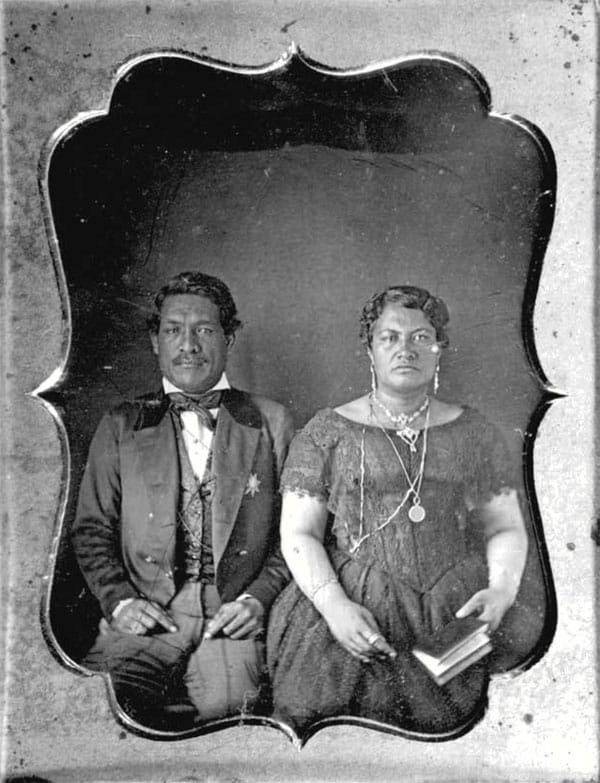Constitutions, the Organic Acts, and the Māhele
Through Hawai‘i’s Constitution of 1840, a Council of Chiefs became a legislative council. There was also a House of Representatives, chosen by the people, and a Supreme Court. There was freedom of religion and trial by a court of law. But some thought that this constitution did not allow enough freedom for the new growth of Hawai‘i as a country.
A new constitution would be created in 1852 to establish an even more official frame of government. It started with a list of rights. It divided the powers of the government into executive, legislative, and judicial branches. There was a “House of Nobles” and a “House of Representatives.” The king was still the ruler, but his powers were now limited by those of the kuhina nui. His acts had to be approved by the Privy Council, too.
Before this updated Constitution of 1852, in 1845, there had been a strong protest among Native Hawaiians against putting foreigners into the government and against giving foreigners land. Petitioners wanted the king to send away the foreigners he had appointed as officers of the kingdom. Kamehameha III could not turn away from Hawaiians who did not want to give foreigners citizenship or property. At the same time, non-Hawaiians were demanding land and rights.
With the help of an American lawyer, John Ricord of Oregon, Kamehameha III addressed the conflicts over land and rights, along with many other important issues, by creating the Organic Acts of 1845–1846. Organic Act I organized the five executive ministers who would work with and serve the king. It also laid out laws for how trade would take place, how stamps would be produced, and how people could get marriage licenses. Organic Act II organized the five executive departments and dealt with things like taxes and how to get a teaching certificate. Organic Act III had to do with the judicial system including trials and judges’ rulings. It set up the courts system with civil and criminal codes. Organic Acts IV and V dealt with criminal and civil principles. All five of the Organic Acts were meant to help the Kingdom of Hawai‘i run smoothly and effectively. They were written in both Hawaiian and English.
Parts of the Organic Acts also explained how land was to be divided between the king and his chiefs. The king divided his own lands in half. One part was the “Crown Lands,” his own lands. The other part was “Government Lands,” which could be bought for a small price. Lands upon which the people already lived and worked were gifted to them. Non-Hawaiians had been given lands before by ali‘i, but no foreigner was allowed to buy any land until after 1850. The formal division of the lands in 1848 was called the Māhele, and the record of lands was kept in the Book of Division, sometimes called the “Māhele Book.” The Māhele was meant to make sure that land was divided clearly and fairly. However, it actually displaced many Hawaiians from the land where they and their ancestors had always lived. The Māhele caused problems because, for the first time in Hawai‘i, it allowed for the sale of and private ownership of lands. Many Hawaiians were not used to or did not agree with the “owning” of land. They were used to sharing the ‘āina and using it for the good of all.

